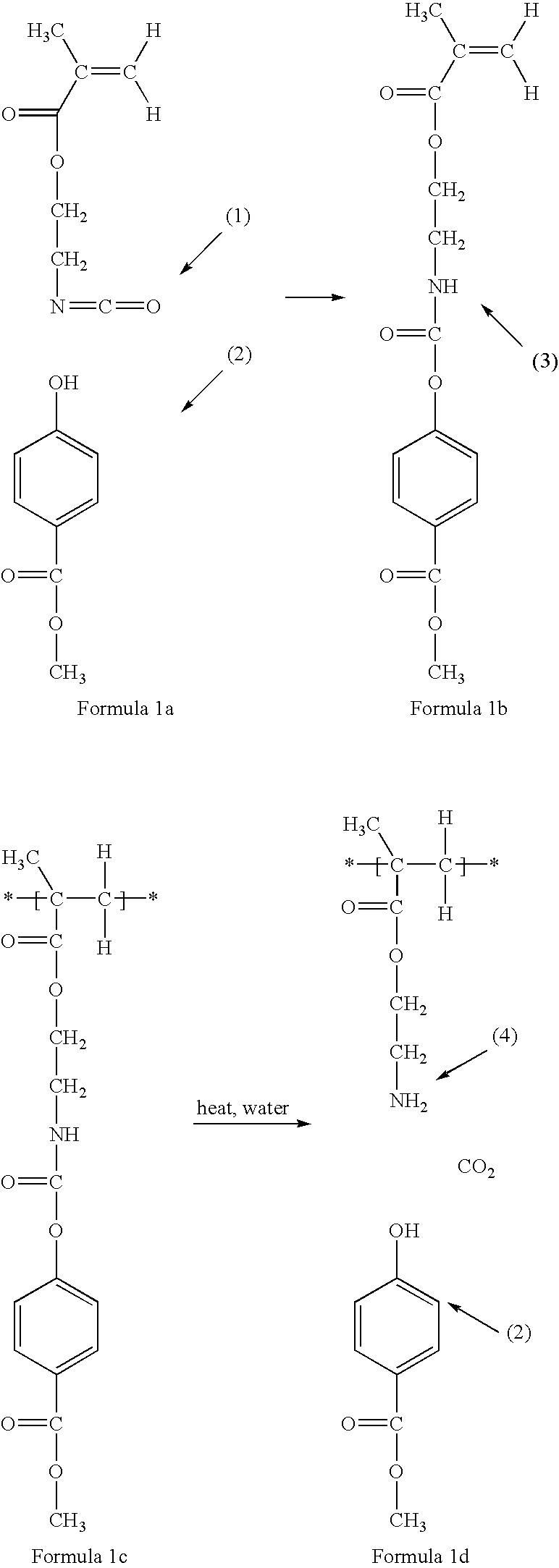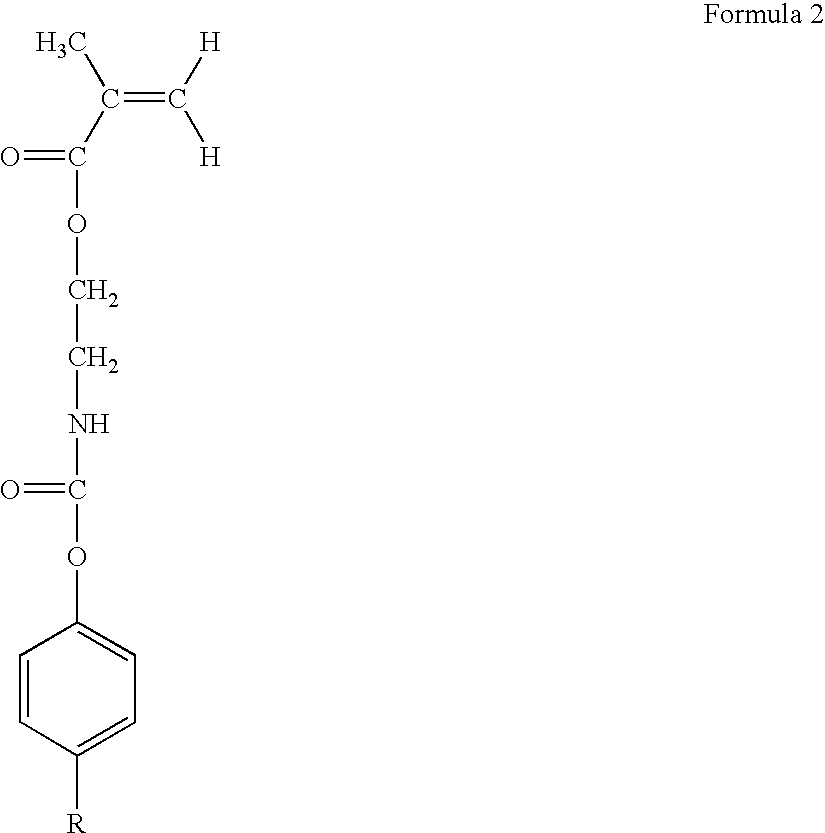Latex particles having incorporated image stabilizers
a technology of image stabilizer and latex, which is applied in the field of color stabilization of latex-based inks, can solve the problems of poor durability of ink-jet prints exposed to water or high humidity, and the difficulty of effectively utilizing photo stabilizers, so as to improve color and water durability, prevent color or ink disassociation, and improve the effect of lightfastness
- Summary
- Abstract
- Description
- Claims
- Application Information
AI Technical Summary
Benefits of technology
Problems solved by technology
Method used
Image
Examples
example 1
[0055] A control latex was formed using a monomer emulsion of 102.5 g methyl methacrylate (Aldrich), 120.0 g hexyl acrylate (Aldrich), 25 g mono-methylacryloyloxyethyl succinate (Aldrich), 2.5 g ethylene glycol dimethacrylate (Aldrich), and 1.0 g isooctylthioglycolate (Avecia) mixed and sheared gently with 85 g water and 20.8 g Rhodafac™ (Rhodia). A reaction bath containing 725 g water was heated to 90° C. To the reaction bath, 0.87 g potassium persulfate dissolved in 100 g water was added dropwise at a rate of 3 ml / min with stirring. The monomer emulsion was subsequently added to the reaction bath dropwise over a period of 30 minutes. The reaction mixture was maintained at 90° C. for 2 hours and allowed to cool down. When cooled to 50° C., the reaction mixture was buffered to pH 8.5 through the addition of 23 g of 17.5% potassium hydroxide solution. The reaction mixture was filtered with a 200 mesh filter to obtain stable polymer latex particles with an average particle size of 230...
example 2
[0056] The composition of Example 1 was duplicated with the addition of 4-hydroxy benzoic acid, a very potent stabilizer, to the monomer mix. A monomer premix was formed with 4.25 g methyl methacrylate, 4.25 g hexyl acrylate, 1.0 g mono-methacryloyloxyethyl succinate, 0.1 g ethylene glycol dimethacrylate, 0.4 g hyroxybenzoic acid, and the premix was emulsified in 7 g water with 0.25 g Rhodafac. The reaction bath consisted of 30 g water with 0.05 g potassium persulfate initiator. Following the addition of the monomer emulsion, the reaction mixture was maintained at 90° C. for 1.5 hour and allowed to cool to ambient temperature. No latex was formed.
example 3
[0057] A stabilizer monomer was synthesized from the condensation reaction of isocyanatoethyl methacrylate and 4-hydroxy methylbenzoate (the ester form of the stabilizer used in Example 2). About 12 g methyl hydroxybenzoate was dissolved in 5 ml of dichloromethane. To this solution, 15 ml of isocyanatoethyl methacrylate (Aldrich) and 1 ml of triethylamine was added. The reaction mixture was stirred at room temperature for 16 hours. The product mixture was washed with hexane to remove unreacted isocyanate. About 23.5 g of stabilizer monomer was produced.
PUM
| Property | Measurement | Unit |
|---|---|---|
| temperature | aaaaa | aaaaa |
| pH | aaaaa | aaaaa |
| particle size | aaaaa | aaaaa |
Abstract
Description
Claims
Application Information
 Login to View More
Login to View More - R&D
- Intellectual Property
- Life Sciences
- Materials
- Tech Scout
- Unparalleled Data Quality
- Higher Quality Content
- 60% Fewer Hallucinations
Browse by: Latest US Patents, China's latest patents, Technical Efficacy Thesaurus, Application Domain, Technology Topic, Popular Technical Reports.
© 2025 PatSnap. All rights reserved.Legal|Privacy policy|Modern Slavery Act Transparency Statement|Sitemap|About US| Contact US: help@patsnap.com


